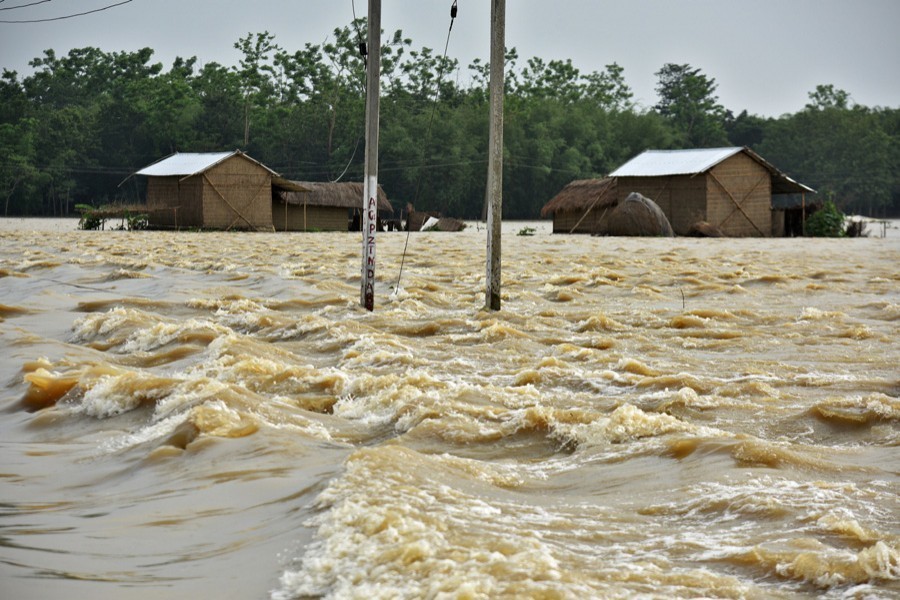
Published :
Updated :

Nearly a month since its start, the ongoing flood stands out with some distinctive features. It remains largely confined to the country's rivers in the northern and northeastern regions. In spite of forecasts about its downward flow, prompted by continued downpour, it has yet to make a full surge towards the central and southern parts of the country. A few southwestern rivers, however, have had to bear with the spillover effect of the swelling in the northern rivers like Teesta, Jamuna, Dharla, Dudmukhi etc. With the monsoon yet to be over, the general impression is that we can not drop our guard on the possibility of a wider flood.
Like in the previous years, the 2019 flood has witnessed large numbers of collapse of village and town protection embankments and breach in dykes. Villagers in some districts have been reported to have woken up at the dead of night on hearing frightful noises of people fleeing the onrush of flood waters clutching at whatever belongings they could lay their hands on. Along with the breaches in dams, river erosions in the current flood have emerged with a fresh fury. A number of structures including schools, roads etc have been devoured by swirling rivers. People moved to elevated places like embankments and roads along with families and cattle. Displacement has been widespread. Rehabilitation of the affected people acquires a top priority with relief material topped up by medical aid required to be rushed to areas where water has been receding. As the flood begins to recede from an area, it gets polluted with viruses carried by flood waters from different directions. Although large-scale outbreak of water-borne diseases has thankfully not yet been reported from flood-affected areas, minor ailments like scabies have returned as in the past. However, scarcity of fresh drinking water emerges as a critical problem.
The most striking of all miseries is the disorganised relief distribution in flood-hit areas, although, in terms of disaster preparedness we have earned plaudits abroad. This year was marked by belated response to the challenge of reaching succour to people badly in need of it. Especially when they were marooned rescue operations were hard to come by. Large tracts of remote areas reportedly missed out on regular visits by administration people.
During the peak of the current spate of flood, a number of large and regionally major rivers flowed above the danger mark at many points. These rivers include Jamuna, Brahmaputra and Surma-Kushiyara. A unique feature has stood out during the current flood. This year, the volume of onrush of water from across the border is less than in the previous years. But even then the damages done to the major crops and human settlements when estimated are likely to be enormous. Experts blame it on the rising level of sediments on riverbeds. As a consequence, even a moderately excessive flow of water into the country's river network results in severe flooding. This calls for an all-out dredging of the important rivers of Bangladesh originating in India. River training assumes critical importance in the context of overall flooding. With the flood still raging, even the current year might start seeing changes in the country's river flows.


 For all latest news, follow The Financial Express Google News channel.
For all latest news, follow The Financial Express Google News channel.